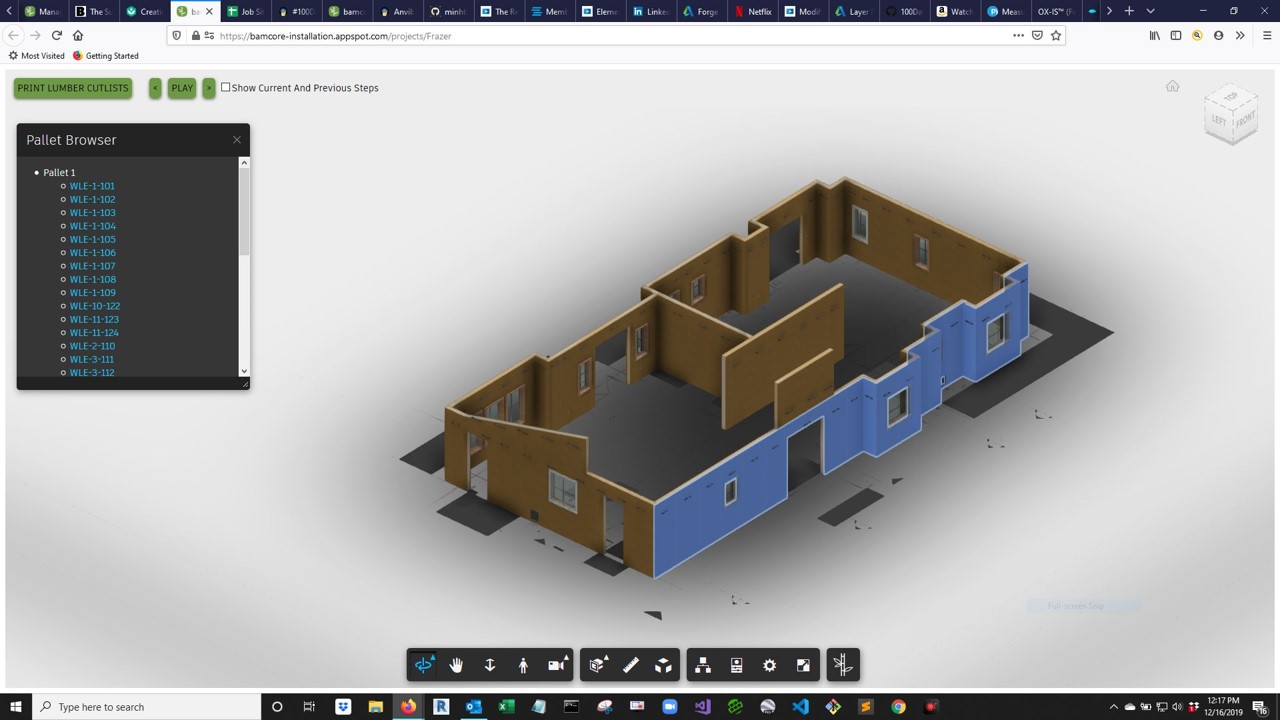Ready to Get Started?
Try Autodesk Platform Services for free by setting up an account and free trial. Explore the resources to learn about the solutions you can build using design and engineering data.
Autodesk Forge is now Autodesk Platform Services

BamCore was founded in 2008 in response to a growing demand for environmentally sound residential and low-rise commercial buildings. Taking into account that the built environment has 4 core problems—high levels of carbon, high cost, labor shortages, long construction cycles—BamCore founders turned to sustainably harvested bamboo as the core structural element of its innovative, custom-engineered, hollow-wall, structural lumber system. Keeping with BamCore’s focus on sustainability and accessibility, their stud-less Prime Wall system ensures faster build time, reduced errors, less waste and therefore lower cost. Plus, it produces structures that are stronger, quieter, and healthier, and that thermally outperform traditionally constructed buildings.
Since 2008, the building industry has seen a significant decrease in numbers of skilled workers as they retire, leaving companies struggling to find the skilled labor necessary to build projects. In addition, construction projects involve many different teams—framing, mechanical (HVAC), plumbing, electrical—in siloed processes that often lead to scheduling clashes, jobsite errors, and time delays. For example, after a building’s structural envelope has been framed, the MEPI (mechanical, electrical, plumbing, and insulation) teams have to cut into and negotiate around the framing to install their specific components, a time-consuming process that can lead to waste, error, and clash.
In a move away from traditional building processes, and to address these problems, BamCore's founder developed a stud-less Prime Wall system. The company delivers to the project site a set of engineered bamboo-wood hybrid panels that have been custom fabricated in BamCore's factory to each specific job. Each panel is cut to exactly fit into the adjoining panel and each panel is pre-cut to millimeter accuracy (by computer-driven equipment) for each window, door, light switch, outlet or access panel. The panels are marked with sequential numbers that allow for precise installation order, and color-coded lines can be added during fabrication that indicate where every electrical and plumbing line will be positioned. The sequential numbering system empowers the onsite building crew to construct the building using a visual map. In addition, the lack of traditional wall studs means considerably fewer obstructions for the utilities lines, drastically reducing conflicts, clashes, and re-works. The dual-panel wall design also means that drywall can be eliminated in many interior situations, with the same finish techniques simply being applied to the interior wall-panel faces.
But BamCore was not satisfied using a 2D building layout. The firm wanted to integrate the full design from the architect and the engineer, and deliver data in a Revit-driven visualization to the jobsite. In a word, they wanted to bring the benefits of BIM (Building Information Modeling) to the masses.
Already an Autodesk user, BamCore and its developer turned to Autodesk Platform Services (APS) to create the jobsite application that transforms Revit model data into animated 3D construction plans. By animating a building’s plan, the jobsite crew members can see the entire construction order from the first panel to the last. The animation can be stopped, started, backed up, or moved ahead at any point. And the details of any specific panel or component can be exploded for further review. The visual building-plan representation removes language barriers and lets project teams use workers with all skill levels, increasing hiring possibilities.
BamCore uses the Data Management API to upload and store Revit models. The Model Derivative API translates the Revit models into the Viewer format, making the model’s metadata available to mobile devices. With the Viewer API, jobsite workers can access the models on their devices without the need for other software programs, and easily follow the animated build sequence. The BamCore team also created custom extensions in the Viewer to enable tasks specific to BamCore, letting the field installation crew browse through pallets, isolate specific elements, create and access lumber cut lists, and draw within the program to indicate MEPI locations. The latest addition is a Design, Bid, Build extension that can let subcontractors bid their portions of jobs using the precise BIM dimensions and locations, all from a visual browser session, while also creating the visual roadmap for installation that will be translated straight to the jobsite through the component locations being marked directly on panel surfaces.
With the extremely accessible and simplified visual guide to installation of the panels and MEPI elements, time to job completion has been drastically reduced, as have errors and corresponding costs and waste. APS highlights include the following:
“When we show the APS-powered jobsite and bidding functionality to a large developer and they see the jobsite animation, they see it’s very nearly job done. When they understand that we can put on the jobsite the benefits of what happens in Revit and the BIM world in a way that translates to lower labor costs, faster completion, and the reduction of waste and errors—it sells itself.”—Hal Hinkle, CEO, BamCore

May we collect and use your data?
Learn more about the Third Party Services we use and our Privacy Statement.May we collect and use your data to tailor your experience?
Explore the benefits of a customized experience by managing your privacy settings for this site or visit our Privacy Statement to learn more about your options.